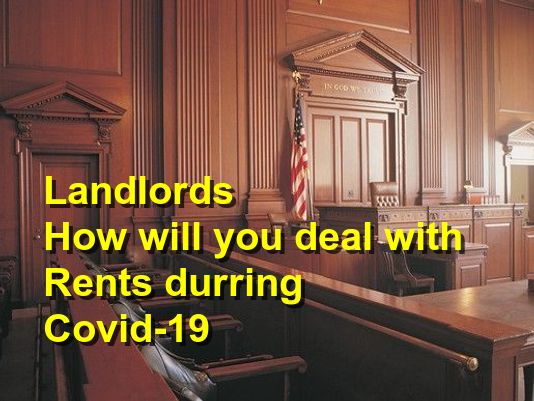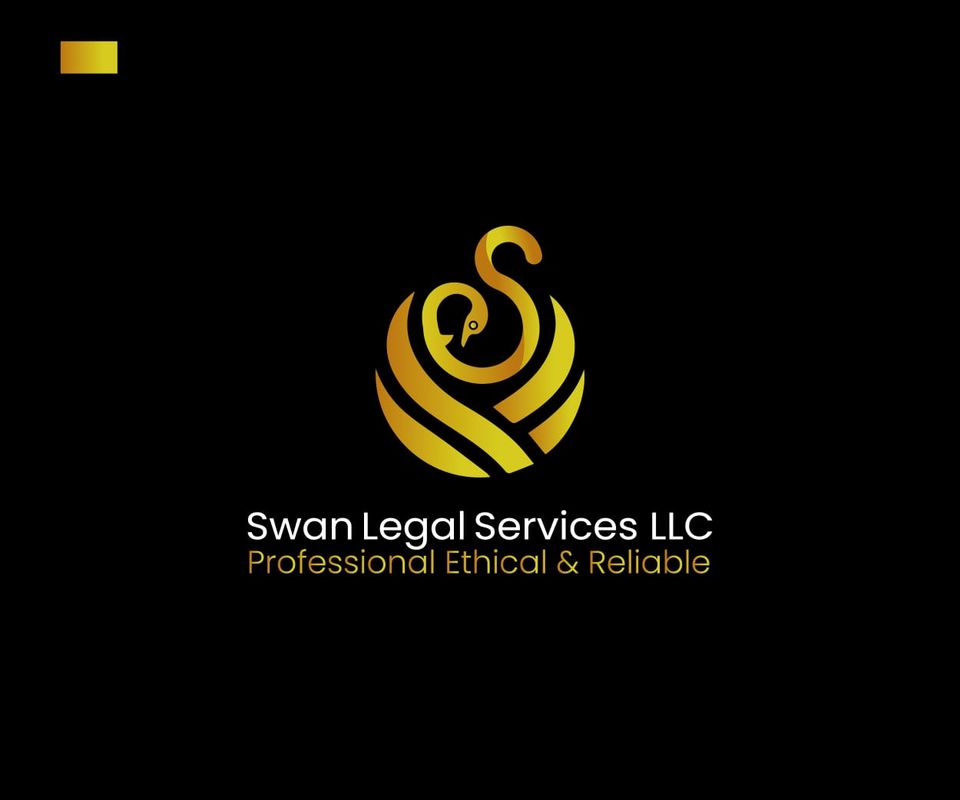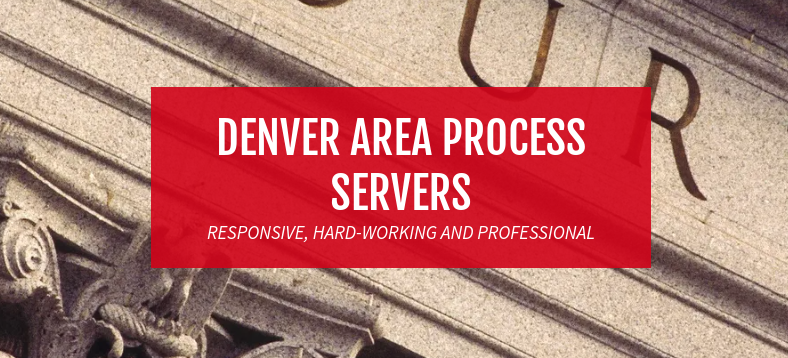Who’s responsible for pest control? Is it the landlord, or the tenant?
A pest infestation can really wreak havoc on your life. Not only can pests damage your home and garden, but they can also be a serious health hazard. It’s always in your best interest to get rid of any infestation as quickly as possible.
The laws around this pest control responsibility vary widely by state. We did the legwork of running down all of the relevant laws we could find for all 50 states and compiled them into this article. We’ll cover some general information you should be aware of regarding the law, what the law says in your state, and what options you have as a tenant if your landlord is refusing to provide pest control services.
General Overview of Pest Control Responsibility
Who is responsible for pest control costs can depend on what the pest is and how it got into the dwelling.
Tenants are often responsible for pests that come in as a result of their actions. For example, if you get ants because your apartment is a mess with food spillage all over, you’ll likely be on the hook for extermination costs for your unit and possibly the entire building.
On the other hand, things like seasonal pest control that needs to be done every year, or treatment for pests like mice, rats, and termites, that may infest through no fault of the tenant.
It’s usually impossible to determine the origin of an infestation with great certainty. If you’re being told you caused the infestation, I would recommend talking to a lawyer and never admitting to causing an infestation to keep yourself off the hook.
Warranty of Habitability
In almost every state, landlords must maintain a certain standard of living in their properties. This doesn’t mean the place will be fancy (or even nice), but it must be “habitable”. This called a warranty of habitability.
It is an implied agreement that basically says “you’re renting this property to live in, therefore, it’s obvious that the property should be in a livable condition”. Each state may have its own written warranty of habitability, but unfortunately, they usually don’t explicitly talk about pests.
Sometimes a State will have other laws on the books giving more clarity around pest control. If not, you’re in a bit of a legal grey area but you can usually fall back on a warranty of habitability which suggests the landlord should remedy the situation.
In general, it’s the landlord’s job to make sure the building is up to code and habitable. If you do report a pest issue, your landlord is required to check with other tenants in the building in case the pests spread.
It’s then up to the landlord to identify and remove the pest. In some cases, the landlord may try some DIY pest removal strategies. This is usually legal but some states may demand a professional service is hired.
Landlords are also responsible for some aspects of pest prevention, like seasonal pest control (when applicable), maintaining cleanliness in any common areas, or fixing pest-attracting water leaks. Some laws also require landlords to educate their tenants on pest prevention through direct education or informative handouts. This is important since tenants are the ones in the building every day.
Responsibility by State
Alabama
Alabama law explicitly states that landlords must “comply with the requirements of applicable building and housing codes materially affecting health and safety; make all repairs and do whatever is necessary to put and keep the premises in a habitable condition.”
This means that most pest control issues fall on the landlord. However, the tenant portion of the law also states that tenants must keep their part of the property clean, so in obvious cases of pests caused by uncleanliness, tenants may be held accountable.
Alaska
According to the Alaska Landlord and Tenant Act, most pest control projects fall under “property maintenance duties.” They specify that landlords must provide: “extermination service if roaches, rats, mice or other pests infest the building, apartment or property.”
This is good news for renters, since it means that in most cases, landlords will be responsible for the removal of the pests, even if they infest the property after you move in.
Arizona
The Arizona Residential Landlord and Tenant Act is a bit unclear on the responsibilities for pest control. Vermin is on the list of conditions the law deems as affecting health and safety within the home. This places responsibility for these infestations on the landlord under the warranty of habitability.
However, the only mention of insect pests is bed bugs. In this case, the law requires the landlord to disclose any bedbug infestation and not enter into a lease agreement on a property with a known infestation. They must also educate their tenants on signs of bed bug infestation. However, there is no clear assignment of responsibility for infestations that occur after moving in.
Arkansas
The law in Arkansas has little to say about pest control. Arkansas is the only state that does not have a warranty of habitability. The law also states, “When you rent a house or apartment, you usually agree to take it ‘as is.’ This means that the landlord is not required to provide additional maintenance to the dwelling.”
This law causes a lot of issues for renters in Arkansas getting stuck with the bill for pests like bedbugs, which are almost always the landlord’s responsibilities in other states. If you are preparing to rent in Arkansas, be aware of this and make sure that the terms of pest control are clear in the lease.
California
The situation in California is good for renters. According to the California Guide for Tenants, landlords are responsible for maintaining a warranty of habitability, which covers both seasonal pest treatments and handling of infestations.
However, the law also lays out a standard series of tenant responsibilities that include maintaining cleanliness. So a tenant can be held responsible for pest control treatments if they failed to do this and it caused an infestation.
Colorado
The warranty of habitability in Colorado specifically states that a dwelling can be declared uninhabitable if it is lacking “appropriate extermination in response to the infestation of rodents or vermin throughout a residential premise.” This means pest control falls on the landlord unless the infestation is caused by the tenant.
The only insect pest with specific legislation is bed bugs. In this case, tenants must immediately notify their landlord, who then has 96 days to respond to the problem.
Connecticut
Connecticut has in place an implied warranty of habitability, so the law here works similarly to other states with such a warranty. Landlords are explicitly required to provide “extermination service if the apartment is infested with pests or rodents.”
However, tenants are required to keep their apartment clean, so there is some ambiguity if the tenant causes the infestation. Be aware of this when going into a lease in Connecticut.
Delaware
Delaware doesn’t mention pests in their Residential Landlord-Tenant Code. The state has an implied warranty of habitability, requiring landlords to “keep in a clean and sanitary condition all common areas of the buildings, grounds, facilities and appurtenances thereto which are maintained by the landlord; Make all repairs and arrangements necessary to put and keep the rental unit and the appurtenances thereto in as good a condition as they were, or ought by law or agreement to have been, at the commencement of the tenancy”
The law also protects tenants withholding rent in the appropriate circumstances. However, this does not apply in cases where the tenant causes the damage.
Florida
Florida has clear laws on pest control responsibility (more clear than most other states). Included on the list of landlord responsibilities is “The extermination of rats, mice, roaches, ants, wood-destroying organisms, and bedbugs. When vacation of the premises is required for such extermination, the landlord is not liable for damages but shall abate the rent.”
That last part means that you won’t ever be paying rent on a building you can’t live in, but the landlord doesn’t have to pay for your hotel either. This can be tough if you don’t have family or friends close by, but it’s better than being stuck with the whole bill.
Georgia
There are no clear laws around pest control in Georgia. There is an implied warranty of habitability in place, but no specific legislation for pests. This includes those that are usually not caused by tenant actions like bed bugs).
This means it is extra important to check your lease every time you are ready to rent. In cases that don’t directly influence the health and safety of the home, landlords have no explicit legal responsibility in Georgia. Keep this in mind to avoid ending up with a hefty pest control bill.
Hawaii
The policies for Hawaii are unclear as far as pest control goes. While landlords are required to maintain habitable conditions, including cases of emergency repair, there is no specific mention of pest control or extermination Hawaii law.
In cases like this where the laws are unclear, it’s especially important to check the lease. The lease will often lay out certain terms for pest control, and if they don’t that’s a red flag.
One property management company in Hawaii only holds landlords responsible for pest control if the infestation is found within 10 days of move-in. Otherwise, they blame the tenant.
Idaho
Idaho law specifically indicates “insect infestations” on the list of issues a landlord must address under the warranty of habitability. As in other states, it is important to follow proper procedure when reporting these infestations. In Idaho, you need to provide the landlord with a written list of issues, then give them three days to begin addressing the problem before pursuing a lawsuit.
Illinois
Illinois has an explicit policy on pest control. That policy is that pest control is the landlord’s responsibility, but “if you are identified as the cause of the infestation, the landlord might refuse to exterminate or may charge you for extermination.”
While the above policy is for the whole state of Illinois, Chicago also passed a law about bed bugs. This is because bed bugs spread rapidly and so they can quickly become a problem for whole buildings and complexes in densely-populated cities.
Luckily for tenants, the law holds landlords financially responsible for clearing the infestation, as well as educating tenants about the prevention of bed bugs. However, there are some conditions. Tenants have to notify their landlords within 5 days of seeing the first bed bug, and must also comply with some basic prevention policies like bagging up belongings and making appropriate preparations for inspections and treatments.
Indiana
There’s no clean-cut allocation of responsibility under Indiana law. There is an implied warranty of habitability, and the law states that landlords are responsible for keeping common areas clean and doing necessary repairs. It also states that tenants are responsible for keeping their own apartments clean.
So the nitty-gritty of who pays for pest control is, like in other states with ambiguous laws, ultimately down to the lease. Make sure to review it carefully and look for any loopholes that could leave you with an expensive pest control bill if you get an infestation.
Iowa
Iowa has an explicit warranty of habitability, which is good news for tenants since it means that many pest control issues fall under that. However, the warranty doesn’t specifically mention insects or vermin, so they may not always be the landlord’s responsibility. Particularly if the infestation occurs some time after moving in.
As in any state where the responsibilities are ambiguous, check your lease. A warranty of habitability has room for interpretation. Don’t assume you are protected in every circumstance.
Kansas
At the state level, Kansas law doesn’t get involved at all in issues of pest control. They leave it up to individual cities, so check the laws where you are planning on renting.
The Kansas Tenant Handbook uses Topeka as an example of common rules of responsibility regarding pest control. In Topeka, landlords must make sure properties are pest-free before renting, but beyond that, it’s the tenant’s problem. Be careful if you’re planning to move to Kansas, because other cities may have similar laws.
Kentucky
Kentucky has a warranty of habitability that states that a landlord must “comply with the requirements of applicable building and housing codes materially affecting health and safety; make all repairs and do whatever is necessary to put and keep the premises in a fit and habitable condition.”
This puts implied legal responsibility on the landlord for pest control issues, since these affect health and habitability. But as always, check your lease and any city laws to avoid getting cheated.
Louisiana
Louisiana laws are unclear as far as pest control responsibility. The closest the state comes to mentioning it is in their guide to preventing and treating for bed bugs for tenants and landlords.
The guide is a good resource on pest control, but not great on the law. They do suggest that landlords hire professionals to get rid of infestations and that tenants report problems to their landlord, so the implication there is that, at least for bed bugs, landlords are usually responsible for pest control in Louisiana.
Maine
Maine has explicit laws for bed bugs. Landlords cannot rent properties containing bed bugs and must remove the pests if they appear. Meanwhile, tenants are obligated to report any bed bug infestation in a timely fashion.
While the rules don’t explicitly extend to other pests, the laws around bed bugs are a good sign. Plus bed bugs are some of the worst pests to get rid of anyway, so it’s good they are protected under law.
Maryland
According to Maryland law firm Whitney, LLP, “Maryland law requires residential apartments to be free of all insect infestations, including bed bugs, at the time the lease begins,” and “When landlords have a duty to fix the infestation and do not do it promptly, they are negligent.”
That said, the government website is a bit less clear on the issue, and the lawyers would have a stake in exaggerating the laws. Make sure to check your lease anyway and discuss these issues with your landlord or local housing authority.
Massachusetts
According to Massachusetts Law Updates (a government blog), “In Massachusetts, landlords are responsible for eradicating insects” in accordance with local health codes. This is good news for tenants since it puts pest control responsibility explicitly in the hands of the landlord in most situations.
Michigan
Michigan law doesn’t mention insect pests specifically, however, according to a government-issued manual on bed bugs, “Owners are responsible for keeping the entire building free from vermin. Tenants are responsible for the cleanliness of those parts of the premises that they occupy and control.”
So it sounds like it works the way it does in many states: landlords handle most pest issues, but are not responsible for tenant-caused infestations.
Minnesota
Minnesota law does not explicitly mention pest control, but there is an implied warranty of habitability. More specifically, the law states that landlords must ensure “that the premises and all common areas are fit for the use intended by the parties,” and they must “keep the premises in reasonable repair during the term of the lease or license, except when the disrepair has been caused by the willful, malicious, or irresponsible conduct of the tenant.”
So in Minnesota, it’s implied that pest control is the landlord’s responsibility, because this would fall under being fit for use. But since it is not explicit, make sure to check your lease and discuss it with your landlord.
Mississippi
Mississippi is a bit of a mystery. We didn’t find any solid government sources for information about pest control responsibility for tenants and landlords.
There is information available from the Mississippi Bar about general responsibilities for tenants and landlords, but these don’t really extend beyond common sense. So make sure you clarify these points with your landlord before signing any lease agreement.
Missouri
Missouri is another state where you might want to check your lease rather than relying on the law to help you. The responsibilities laid out in Missouri’s-Landlord Tenant Law don’t really refer to pest control.
However, there is an implied warranty of habitability, and tenants are responsible for maintaining cleanliness of their dwellings, so varies by case based on the source of the pest. When in doubt, make sure to get everything in writing in your lease so there are no surprises.
Montana
According to Montana Law Help, landlords do not have an obligation to inform tenants of a history of bed bugs in the apartment. However, they are required to exterminate them if you find them.
The exception is if the bed bugs can be proven to be caused by the tenant or one of their guests, which is all but impossible when the infestation spreads to multiple dwellings in a building. The law does not explicitly apply to other pests, but these fall under an implied warranty of habitability, so prospects look good for Montana renters.
Nebraska
Nebraska has no pest control laws on the books, but properties in the state are protected under an implied warranty of habitability. The Landlord and Tenant Handbook from Legal Aid of Nebraska states that you may even be able to move out of your apartment without consequence if you notice problems early enough.
However, they also advise to go through your lease carefully. This is important in any state (and there are quite a few on this list) that is vague on its laws regarding pest control responsibility.
Nevada
In their warranty of habitability, Nevada mentions “Building, grounds, appurtenances and all other areas under the landlord’s control at the time of the commencement of the tenancy in every part clean, sanitary and reasonably free from all accumulations of debris, filth, rubbish, garbage, rodents, insects and vermin” as a condition of habitability.
However, this only explicitly refers to the time the tenancy begins. This means there could be some ambiguity if there is a pest infestation after the fact. In general, don’t rely on this law and make sure to look carefully through your lease.
New Hampshire
New Hampshire actually amended their tenant-landlord laws for pest control in 2013. This amendment made bed bug infestations the explicit responsibility of the landlord to deal with, as long as the tenant has notified the landlord appropriately and does not deny access to the dwelling for inspection and extermination.
However, the landlord can collect the cost of the remediation if the bed bug infestation is the fault of the tenant.
New Jersey
According to New Jersey legislation, “The owner of a multiple dwelling, with the cooperation of tenants, is in the best position to coordinate the extermination of bedbug populations in that multiple dwelling.” This puts responsibility in the hands of the landlord.
As in other states, the laws are specific to bedbugs, but may be applicable to other pests as well. As always, discuss your lease with your landlord and a lawyer if possible.
New Mexico
New Mexico has an implied warranty of habitability, requiring landlords to maintain properties in a habitable condition (and thus free from pests). However, the laws don’t mention insects explicitly.
One thing the law does mention is rent abatement. The law protects tenants withholding rent if landlords have not made necessary repairs, which makes it much enforcing the warranty of habitability a lot easier for tenants.
New York
New York’s Housing and Maintenance Code, Subchapter 2, Article 4, states that tenants have the right to a bedbug-free living environment. Landlords even have to disclose a history of bed bugs. A bed bug infestation is a serious violation and landlords have 30 days to deal with the problem.
While these laws are about bed bugs rather than pests in general, in general it shows that New York is a good state for enforcing their warranty of habitability. So while you’re unlikely to get your pest control paid for if the infestation is your fault, you should be covered in most cases.
North Carolina
North Carolina law is pretty explicit about bed bugs, but the law is not always a great deal for tenants. According to House Bill 721, landlords must hire an inspector to confirm there are no bed bugs before renting. If they fail to do so and a tenant finds bed bugs within 60 days of move in, it is the landlord’s responsibility.
Other than that, the law seems to indicate it’s up to the tenant to pay for it. It’s not clear on what happens for other pests, but bed bugs are one of the worst pest infestations, so this is not a good sign.
North Dakota
As in many states, the law in North Dakota makes no mention of pest control. However, there is an implied warranty of habitability, which states that landlords must keep buildings up to health and safety codes and make the necessary repairs to see if they aren’t.
Most pest infestations can fall under this warranty, but just in case, make sure to check your lease since the laws are not explicit in this state.
Ohio
Landlords in Ohio have to keep buildings safe and habitable under an implied warranty of habitability, as is the case in many other states. This means most pest control issues should be the landlord’s responsibility.
This is not true if it’s the tenant’s fault. In fact, Ohio takes this one step further and allows landlords to repossess apartments if there is a violation of a health code that is “primarily caused by any act or lack of reasonable care by the tenant, or by any other person in the tenant’s household, or by anyone on the premises with the consent of the tenant.” This could spell trouble for bad pest problems, so watch out.
Oklahoma
There are no explicit laws around pest control in the state of Oklahoma. In fact, there isn’t even a solid ruling on whether pests like bed bugs constitute a public health nuisance. So while landlords cannot rent apartments with known infestations, there’s not much legal recourse for refusing to exterminate bed bugs if the infestation is found well after moving in.
So as always, be aware of the terms of your lease. Discuss these issues with your landlord so you don’t end up with an unpleasant surprise.
Oregon
Oregon does mention “rodents and vermin” in their warranty of habitability. So it’s safe to assume that apartments must be rented pest-free and any pests that are the result of negligence by the landlord will be their responsibility.
However, the law doesn’t provide clear guidance beyond that. So, as always, make sure to look through your lease carefully and talk through the details with your landlord and a lawyer if possible, just to be on the safe side.
Pennsylvania
Pennsylvania rented dwellings are protected under an implied warranty of habitability. This means that landlords are often responsible for pest removal since pests like bed bugs make a dwelling unsafe and uninhabitable.
But because there are no explicit laws, this is another state where it’s important to make sure to get these types of issues in writing ahead of signing the lease. Even if it’s right for landlords to take responsibility, it’s harder to enforce a law that doesn’t quite exist.
Rhode Island
Rhode Island Law covers a few different possible extermination situations with different responsibilities for each. If you live in a single-dwelling unit and get a pest problem, the responsibility is shared among all occupants. However, if you live in a multi-dwelling unit and the problem only affects your section, then you are responsible. If the problem affects multiple dwellings (more than two), it is the landlord’s responsibility.
All of this is superseded by a clause that states that the responsibility for pest control falls to the landlord if the pest problem is caused by negligence by the owner. For example, if an unrepaired leak attracts rats.
South Carolina
Like some other states, South Carolina’s pest control laws are focused on bed bugs, but it can be reasonably inferred that they’d apply elsewhere too.
The law puts the responsibility on the landlord if the pest problem was present in the home before renting and not disclosed. However, the responsibility is the tenant’s if the infestation proves their fault. This is a bit difficult to prove with bed bugs, especially since they spread through buildings quickly, so hopefully this will favor the tenants in many cases.
South Dakota
Not much specific legislation on pest control in South Dakota. There is an implied warranty of habitability, which should cover insect infestations. Like many other states, this excludes situations that are the tenant’s fault.
One interesting rule in South Dakota is that landlords can hold tenants responsible for repairs in exchange for rent. The allowable monetary value of the repair is not clear, though. So watch out for this rule in case it’s possible for a landlord to hold tenants responsible for repairs or pest control that end up being more expensive than the rent.
Tennessee
Tennessee law puts part of the responsibility for pest control directly on the landlord, but it puts a limit on it. The law states, “Every multiple dwelling or rooming house shall be kept reasonably free of household vermin provided that the landlord shall not be required to carry out treatment measures more than twice per year.”
In general, this probably shakes out to the same laws as other states, where landlords handle pest control unless it’s the tenant’s fault, but watch out. The phrasing of this law may cause landlords to try to get out of treating bad pest infestations that require multiple treatments.
Texas
Texas Property Code Title 8 requires landlords to make repairs if they affect the health and habitability of the building, which would generally include insect problems. Tenants must notify the landlord in writing of the problem.
The law does not seem to specify pest control as a repair, but Texas Law Help states that landlords are required to get rid of bed bugs unless they are proven to be the tenant’s fault, presuming rent is up to date and the landlord was notified in writing. However, they do not cite the specific legislation, so take that with a grain of salt.
Utah
It is a bit difficult to get good online information on the law in Utah directly, but American Apartment Owners Association provides a pretty good summary.
In short, Utah operates under a warranty of habitability, so landlords have to keep properties safe and healthy. The site even goes on to state that landlords are responsible for “taking care of bug infestations,” but they don’t specify much further than that.
Since the legal information is a bit hard to access, make sure to check your lease and get legal advice if necessary. You should never make all of decisions entirely based on third party information (including this article).
Vermont
Vermont law requires tenants and landlords to each take responsibility depending on the origin of the infestation. The law states, “The owner of a dwelling shall be responsible for extermination of any infestation in any dwelling unit when infestation in a dwelling unit is caused by his or her failure to maintain the dwelling or infestation exists in two or more of the dwelling units in any dwelling.”
But it also states “The occupant of each dwelling unit shall maintain that part of the dwelling he or she exclusively occupies free from infestation and shall be responsible for extermination when the infestation is caused by his or her failure to maintain the dwelling unit”
So whole building problems and problems from poor building maintenance are the landlord’s problem, but if you bring pests in, it’s up to you to get rid of them.
Virginia
Like many states, Virginia does not have a law on the books for pest control responsibility. That said, there is an implied warranty of habitability, so landlords “are required to follow building and housing codes affecting health and safety, and to make all repairs needed to keep the place fit and habitable.”
So make sure to make it explicit in the lease, but in general the law is on your side. Most pests are violations of health and safety codes, so these are the landlord’s responsibility
Washington
Washington law states that landlords must, “provide a reasonable program for the control of infestation by insects, rodents, and other pests at the initiation of the tenancy and, except in the case of a single-family residence, control infestation during tenancy except where such infestation is caused by the tenant.”
So if it’s not your fault you have pests, it’s up to the landlord to get rid of them. Excellent news for tenants.
West Virginia
Pest control responsibility has been a source of controversy in recent years. Because there is no specific law on the books about pest control responsibility, other than an implied warranty of habitability, landlords have been able to get out of paying for pest control, specifically for bed bugs.
In 2017 the Attorney General wrote a letter regarding this issue declaring that the practice was deceptive and illegal. So hopefully it happens less now. However, the laws around pest control have not changed, so dishonest landlords may still be attempting to cheat their tenants like this.
Wisconsin
Wisconsin doesn’t mention pests in their legislation, but the implied responsibility is the landlord’s. The law states that all landlords must make necessary repairs in their properties and ensure their homes are up to health and safety codes. Pest infestations tend to defy these codes, so this puts pest control under that legislation.
The exception to this law is “repairs made necessary by the negligence of, or improper use of the premises by, the tenant.” So like in many other states, if you brought the pests in, you have to get rid of them. Interestingly, Wisconsin law states that landlord’s have a responsibility to remaining tenants even if one tenant causes an issue. So if you get a pest because of your neighbors’ lack of cleanliness, you are still off the hook.
Wyoming
Wyoming is another state with an implied warranty of habitability, but not much else. This means the only legal obligation landlords have towards pest control is in cases where it influences the health and safety of the building.
This can be subjective, so always look at your lease in advance and discuss pest control responsibility ahead of time so you don’t get cheated. Check the laws in your specific city as well – since there may be city legislation that offers some clarity.
If Your Landlord Doesn’t Fix the Problem
Unfortunately, even if the law states that it is the landlord’s responsibility to fix a certain pest problem, they may try to get out of it. Remember, a dishonest landlord doesn’t have an immediate need to get the pests out of the apartment because unlike you, they do not necessarily live in the building. This is especially true in large apartment complexes.
But this doesn’t mean there’s nothing you can do. Here are some steps you may need to consider if you’re having a pest control conflict with your landlord.
Note: this is not legal advice and you should always consult with a lawyer when in this situation.
Breaking the Lease
Remember earlier when we told you to check your lease? If the lease is on your side, you may be able to get out of it legally. Breaking a lease usually involves big legal and financial consequences. However, this is not so true if the landlord has gone back on his responsibilities.
This should generally be done only after attempting to solve the issue directly with the landlord. You can also file a formal complaint to the city or state health department. They will issue a violation to your landlord if their inspection determines that your complaint is valid. Breaking a lease this way generally involves giving your landlord written notice. You may also have to wait a certain amount of time depending on your state.
Withholding Rent
If you haven’t had to do it before, rent withholding sounds like something unethical or illegal, but it’s actually perfectly legal in the right contexts. Rent withholding was actually designed to protect vulnerable renters from abusive landlords.
However, don’t just stop paying and stay silent when you plan to do this. It’s important that you have done your homework so that what you do is legal and not cause for an eviction. You should do this only after the landlord has already had a chance to fix the problem and has failed.
Withholding rent typically means you’re setting aside your rent payments and will only release them to your landlord when they remedy the problem. This doesn’t mean you get to skip rent payments or even spend that money. You should be able to show you still have it set aside and it’s not a matter of not being able to afford to pay.
In general, you need to notify your landlord in writing if what you intend to do, which also gives them one last chance to fix the problem. Whatever you do, notify your local housing authority so they can help you. Do not make any rash decisions about rent withholding – you could end up evicted (even if it’s not your fault!).
Lawsuit
This should generally be a last resort option for handling a pest issue. Individual lawsuits are tremendously time consuming and expensive, and often don’t resolve in favor of tenants because they usually can’t afford the associated legal costs.
Where lawsuits make more sense is when the infestation affects whole buildings or complexes. In this case, a class-action lawsuit can pit you and your neighbors against the landlord. These cases more often resolve favor of the tenants or settle out of court. It’s much easier to prove that a landlord has violated a warranty of habitability when pest issues affect many people in separate apartments.
Tags:
Eviction Information,
Property Maintenance









 When a Tenant is served a Summons and Complaint in an Eviction or Unlawful Detainer they are required to answer the eviction lawsuit. All forms found on NationalEvictions are through our partner, US Legal and US Legal Forms.
When a Tenant is served a Summons and Complaint in an Eviction or Unlawful Detainer they are required to answer the eviction lawsuit. All forms found on NationalEvictions are through our partner, US Legal and US Legal Forms.










